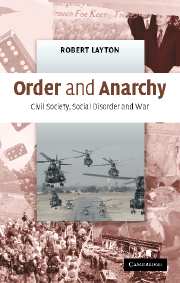31 results
Authorship analysis of aliases: Does topic influence accuracy?
-
- Journal:
- Natural Language Engineering / Volume 21 / Issue 4 / August 2015
- Published online by Cambridge University Press:
- 08 October 2013, pp. 497-518
-
- Article
- Export citation
Evaluating authorship distance methods using the positive Silhouette coefficient
-
- Journal:
- Natural Language Engineering / Volume 19 / Issue 4 / October 2013
- Published online by Cambridge University Press:
- 28 September 2012, pp. 517-535
-
- Article
- Export citation
Automated unsupervised authorship analysis using evidence accumulation clustering
-
- Journal:
- Natural Language Engineering / Volume 19 / Issue 1 / January 2013
- Published online by Cambridge University Press:
- 21 November 2011, pp. 95-120
-
- Article
- Export citation
Recentred local profiles for authorship attribution
-
- Journal:
- Natural Language Engineering / Volume 18 / Issue 3 / July 2012
- Published online by Cambridge University Press:
- 09 June 2011, pp. 293-312
-
- Article
- Export citation
Pattern and Process in Cultural Evolution, edited by Stephen Shennan, 2009. Berkeley (CA): University of California Press; ISBN 978-0-529-25599-9 hardback £35 & US$60; vii+342 pp., 109 figs, 28 tables
-
- Journal:
- Cambridge Archaeological Journal / Volume 21 / Issue 1 / February 2011
- Published online by Cambridge University Press:
- 31 January 2011, pp. 156-158
- Print publication:
- February 2011
-
- Article
- Export citation
Contributors
-
-
- Book:
- The Cambridge Dictionary of Christianity
- Published online:
- 05 August 2012
- Print publication:
- 20 September 2010, pp xi-xliv
-
- Chapter
- Export citation
Reckoning with the Dead: The Larsen Bay Repatriation and the Smithsonian Institution. T.L. Bray and T.W. Killion (Editors). 1994. Washington and London: Smithsonian Institution Press, xiv + 194 p, illustrated, soft cover. ISBN 1-56098-365-5. £23.25; US$35.95.
-
- Journal:
- Polar Record / Volume 32 / Issue 182 / July 1996
- Published online by Cambridge University Press:
- 27 October 2009, pp. 258-259
-
- Article
-
- You have access
- Export citation
Thinking with Animals in Upper Palaeolithic Rock Art
-
- Journal:
- Cambridge Archaeological Journal / Volume 19 / Issue 3 / October 2009
- Published online by Cambridge University Press:
- 01 October 2009, pp. 319-336
- Print publication:
- October 2009
-
- Article
- Export citation
References
-
- Book:
- Order and Anarchy
- Published online:
- 23 November 2009
- Print publication:
- 25 May 2006, pp 174-192
-
- Chapter
- Export citation
2 - Self-interest and social evolution
-
- Book:
- Order and Anarchy
- Published online:
- 23 November 2009
- Print publication:
- 25 May 2006, pp 46-91
-
- Chapter
- Export citation
Contents
-
- Book:
- Order and Anarchy
- Published online:
- 23 November 2009
- Print publication:
- 25 May 2006, pp v-v
-
- Chapter
- Export citation
Frontmatter
-
- Book:
- Order and Anarchy
- Published online:
- 23 November 2009
- Print publication:
- 25 May 2006, pp i-iv
-
- Chapter
- Export citation
Index
-
- Book:
- Order and Anarchy
- Published online:
- 23 November 2009
- Print publication:
- 25 May 2006, pp 193-197
-
- Chapter
- Export citation

Order and Anarchy
- Civil Society, Social Disorder and War
-
- Published online:
- 23 November 2009
- Print publication:
- 25 May 2006
3 - The breakdown of social order
-
- Book:
- Order and Anarchy
- Published online:
- 23 November 2009
- Print publication:
- 25 May 2006, pp 92-137
-
- Chapter
- Export citation
4 - Warfare, biology and culture
-
- Book:
- Order and Anarchy
- Published online:
- 23 November 2009
- Print publication:
- 25 May 2006, pp 138-173
-
- Chapter
- Export citation
1 - Civil society and social cohesion
-
- Book:
- Order and Anarchy
- Published online:
- 23 November 2009
- Print publication:
- 25 May 2006, pp 1-45
-
- Chapter
- Export citation
Acknowledgements
-
- Book:
- Order and Anarchy
- Published online:
- 23 November 2009
- Print publication:
- 25 May 2006, pp vi-vi
-
- Chapter
- Export citation
4 - Is culture a commodity?
-
-
- Book:
- The Ethics of Archaeology
- Published online:
- 05 June 2012
- Print publication:
- 19 January 2006, pp 46-68
-
- Chapter
- Export citation



